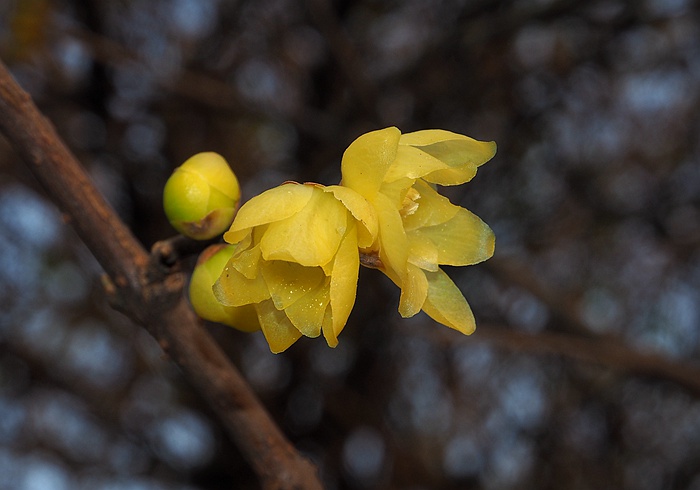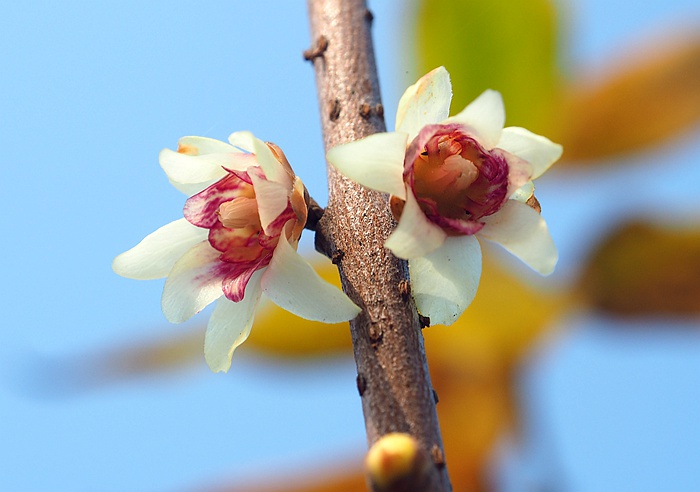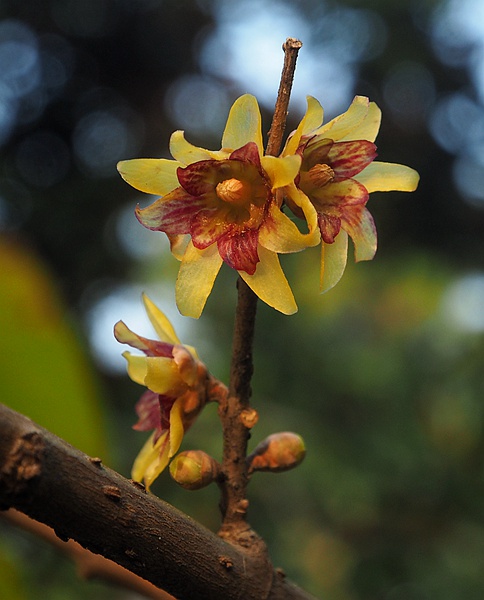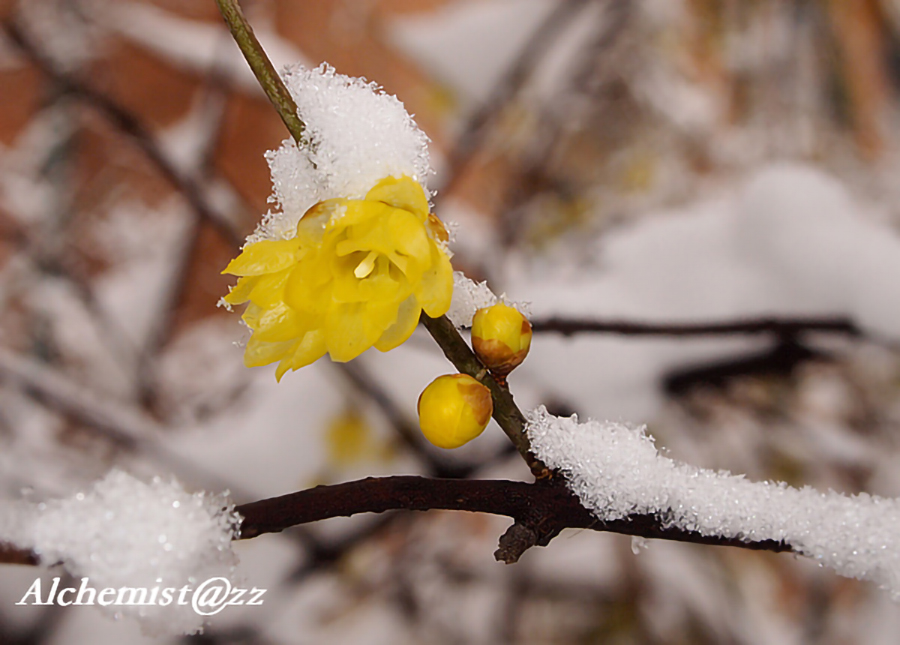蜡梅 Chimonanthus praecox
- Scientific Name: Chimonanthus praecox (L.) Link
- Ref: Enum. Pl. Hort. Berol. 2:66. 1822
- Synonyms: Beureria praecox (L.) Kuntze; Calycanthus praecox L.; C. suaveolens Salisb.; Chimonanthus caespitosus T.B.Chao, Z.X.Chen & Z.Q.Li; C. fragrans (Loisel.) Lindl.; C. grandiflorus (Lindl.) Steud.; C. luteus (G.Don) Biel.; C. parviflorus Raf.; C. praecox var. reflexus B.Zhao; C. praecox f. versicolor B.Zhao; C. verus Biel.; C. yunnanensis W.W.Sm.; Meratia fragrans Loisel.; M. praecox (L.) Rehder & E.H.Wilson; M. yunnanensis (W.W.Sm.) Hu
- English Common Name: wintersweet, Japanese allspice
- Chinese Common Name: 蜡梅 làméi, 腊梅[误] làméi
- Japanese Common Name: ロウバイ [蠟梅/臘梅] rōbai
- Family: Calycanthaceae
- Genus: Chimonanthus
- Distribution: Montane forests; 500-1100 m. Anhui, Fujian, Guizhou, Henan, Hubei, Hunan, Jiangsu, Jiangxi, Shaanxi, Shandong, Sichuan, Yunnan, Zhejiang. Because of its extensive and long cultivation in China, some of the reported distribution is uncertain as to it actually being native.
- Photo: 01/05/2013, Hangzhou Botanical Garden, Zhejiang
Shrubs or small trees, 3-13 m tall, deciduous or sometimes with persistent leaves. Branchlets grayish brown, quadrangular when young but becoming subterete, glabrous or slightly puberulent, lenticellate; buds usually axillary on branches of previous year; bud scales subcircular, imbricate, outside pubescent. Petiole 0.3-1.8 cm, pubescent; leaf blade ovate, elliptic, broadly elliptic, ovate-elliptic, oblong-elliptic, or sometimes oblong-lanceolate, 5-29 × 2-12 cm, papery to subleathery, abaxially glabrous except for occasional scattered trichomes on veins, adaxially roughly scabrous, secondary veins 4-6 on each side of midvein, base cuneate to rounded, apex acute, acuminate, or sometimes caudate. Flowers on branches of previous year, solitary or paired, appearing generally before leaves, 1.5-4 cm in diam., sweetly fragrant. Pedicel 2-8 mm. Tepals 15-21, yellow but inner ones usually with purplish red pigment, 0.5-2 × 0.5-1.5 cm; outer tepals orbicular to obovate, puberulent, apex truncate or rounded; median tepals elliptic to oblong-elliptic, glabrous or sometimes margin ciliate, apex rounded to acute; inner tepals orbicular to oblong, glabrous or sometimes margin ciliate, base distinctly clawed, apex rounded. Stamens 5-8, 2.5-4 mm; filaments broad, longer, equal, or rarely shorter than anthers, basally pubescent or glabrous; anthers glabrous; connective puberulous or glabrous, apex acute; staminodes 2-15, subulate to linear-lanceolate, 2-3 mm, pubescent. Carpels 5-15, hirtellous at base; style ca. 3 × as long as ovary, pubescent at base. Pseudocarp urceolate, ovoid-ellipsoid, or obovoid-ellipsoid, 2-6 × 1-2.5 cm, subwoody, apex constricted, apical appendages 9 or 10, tapered lanceolate, with trichomes. Achenes 3-11, brown, ellipsoid to reniform, 15-16.5 × 5-5.6 mm, pubescent at base. Fl. Oct-Mar, fr. Apr-Nov. 2n = 22*. (Flora of China)

01/24/2014, Hangzhou Botanical Garden, Zhejiang

12/31/2016, Hangzhou

12/31/2016, Hangzhou

12/31/2016, Hangzhou
